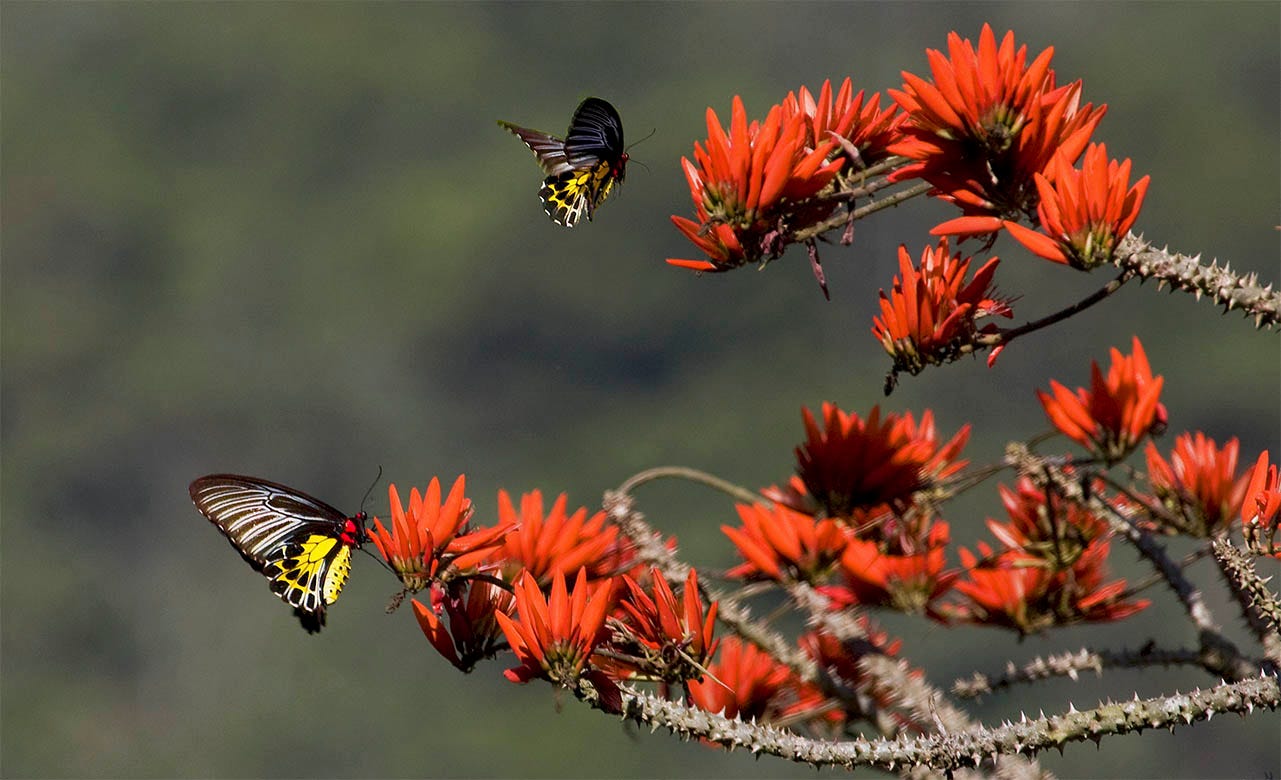Small lives matter too

Look around you the next time you are in the Western Ghats. The myriad of trees, the dense substrate on the ground. All of this was possible only thanks to the animals that you don’t see at first sight: You hear some of their chirps and squeaks all around you, and in some cases you hear nothing at all. But these small lives are what make up the most crucial part of a rainforest ecosystem. The Western Ghats gives way to at least one new species discovery every year, and it’s usually in this category of small lives. Let’s find out more about our tiny ecosystem engineers, shall we?
Avian Farmers:
Birds may be recognizable to you, but did you know that the Western Ghats is home to over 500 of them? That’s a third of all bird species in India. Our feathered friends are responsible for keeping insect populations in check, while also contributing to pollination activities. Hornbills, for instance, are known as farmers of the forest because they disperse seeds of ficus trees, which are crucial trees for multiple species as shelter or food sources. There are also around 29 endemic species in the Western Ghats, meaning they are found nowhere else.
Reptile Neighbors:
Lower in the forest levels, reptiles make sure that there is no overpopulation of small mammals or other small creatures. There are over 570-600 species of reptiles in India, with a recent field guide revealing that the Western Ghats is home to around 123 of those.
From the Malabar Pit Viper that comes in a variety of shades, to the King Cobra, the only snake that builds a nest, to the Flying Lizard whose yellow fan betrays its presence.
Amphibian acquaintances:
It wouldn’t be the Western Ghats without the symphony of amphibian calls during the monsoons! The Western Ghats is an absolute haven for amphibians, with over 230 species occurring here alone. That’s reported to be over half the total species in India! And over 90% of species are endemic, which makes them truly special. Amphibians play a role both as prey and predator sources, but also in ecosystem design: Their burrowing habits are a part of ecosystem engineering, similar to how elephants make paths in the forests by clearing out trees. The Malabar Gliding Frog, Kudremukha Bush Frog, Kottigehara Dancing Frog are just a few popular examples of amphibians.
6-footer pollinators:
Insects make up the bulk of the pollinators in the Western Ghats. There are over 6000 species of these 6-footers! While most of them are indeed pollinators, others act as food sources for larger animals or even other insects. Butterflies are a particularly diverse group of insects here, with over 334 species of the winged jewels recorded here. The Ghats are home to the Southern Birdwing, India’s second largest butterfly.
As with our previous article, there is one more member of the ghats that we are yet to discuss. We believe that they require their own article to be spoken about! That’s coming soon…
Article by - Abhilash Pavuluri



